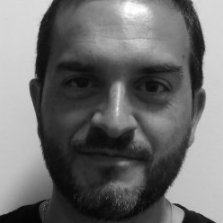Microwave Devices: Analysis, Design, and Application
A special issue of Electronics (ISSN 2079-9292). This special issue belongs to the section "Microwave and Wireless Communications".
Deadline for manuscript submissions: 20 August 2024 | Viewed by 6114
Special Issue Editors
Interests: microwave components; radar; radio astronomy receivers
Special Issues, Collections and Topics in MDPI journals
Interests: microwave components; antennas; radar; radio astronomy receivers
Interests: microwave components; printed antennas; antennas for medical applications
Special Issues, Collections and Topics in MDPI journals
Special Issue Information
Dear Colleagues,
Microwave devices are the fundamental components of microwave systems purposely employed in the generation, amplification, manipulation, detection, and measurement of microwave signals (within the frequency spectrum ranging from 300 MHz to 300 GHz). They can be classified as active or passive components. With plenty of applications, including telecommunications, remote sensing, material characterization, radar, radioastronomy and many others, the technological advancement in this field has witnessed impressive progress. New materials, clever layouts, tentative fabrication, and measurement techniques are appealing for knowledge sharing in the scientific community.
The aim of the Special Issue on “Microwave Devices: Analysis, Design, and Application” is to exchange experiences and research information on the theory, design, and simulation processes as well as the application of these devices.
The main topics of this Special Issue cover the entire pipeline of microwave device development, including below but not limited to the following:
- Electromagnetic theory of signal propagation and processing;
- Electromagnetic CAD software tools to design and simulate microwave components;
- Technology and processes: fabrication, materials, and assembly;
- Measurement techniques to characterize the performances in different conditions (ambient or cryogenically cooled temperatures).
Dr. Tonino Pisanu
Dr. Paolo Maxia
Dr. Giacomo Muntoni
Guest Editors
Manuscript Submission Information
Manuscripts should be submitted online at www.mdpi.com by registering and logging in to this website. Once you are registered, click here to go to the submission form. Manuscripts can be submitted until the deadline. All submissions that pass pre-check are peer-reviewed. Accepted papers will be published continuously in the journal (as soon as accepted) and will be listed together on the special issue website. Research articles, review articles as well as short communications are invited. For planned papers, a title and short abstract (about 100 words) can be sent to the Editorial Office for announcement on this website.
Submitted manuscripts should not have been published previously, nor be under consideration for publication elsewhere (except conference proceedings papers). All manuscripts are thoroughly refereed through a single-blind peer-review process. A guide for authors and other relevant information for submission of manuscripts is available on the Instructions for Authors page. Electronics is an international peer-reviewed open access semimonthly journal published by MDPI.
Please visit the Instructions for Authors page before submitting a manuscript. The Article Processing Charge (APC) for publication in this open access journal is 2400 CHF (Swiss Francs). Submitted papers should be well formatted and use good English. Authors may use MDPI's English editing service prior to publication or during author revisions.
Keywords
- radioastronomical receivers
- cryogenic temperatures
- microwave devices
- antennas
- feed horns
- waveguide components
- low noise amplifiers
- directional couplers
- waveguide to coaxial transitions
- polarizers
- ortho mode transducers







